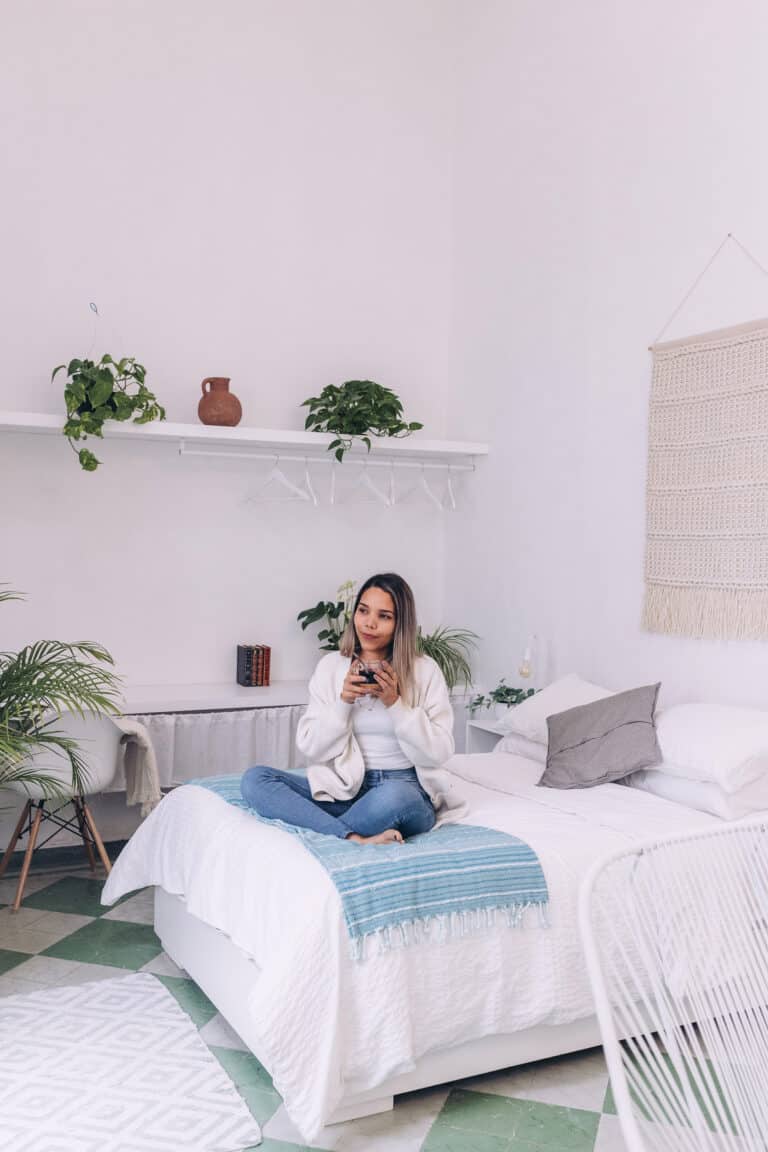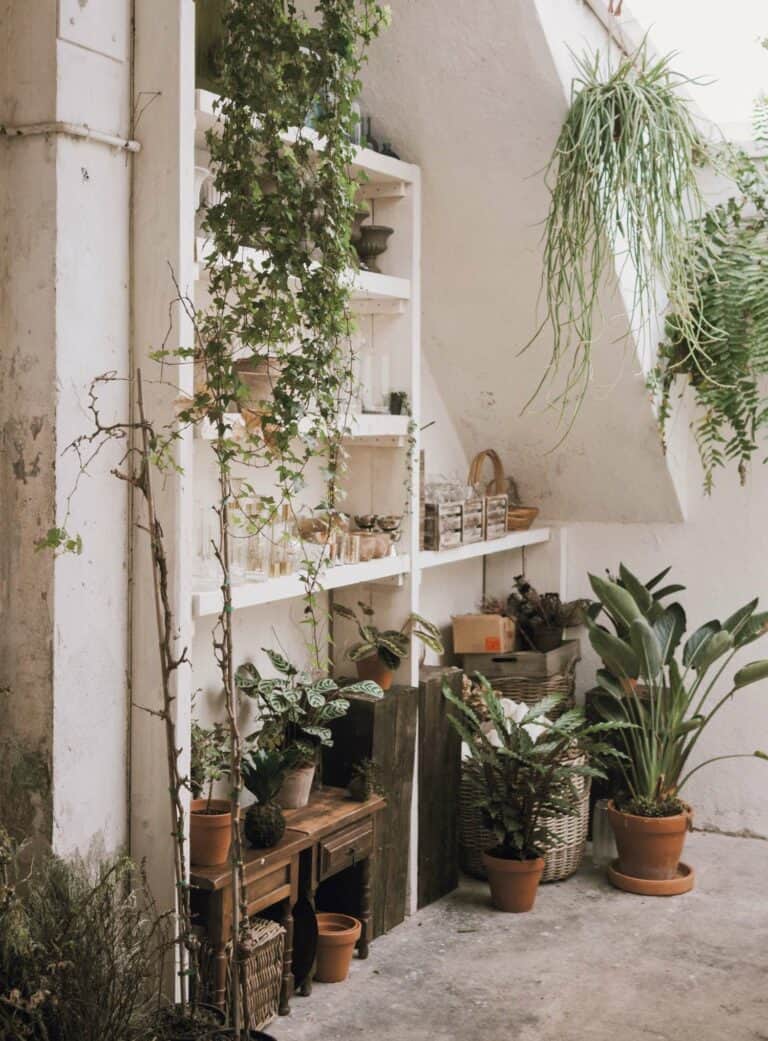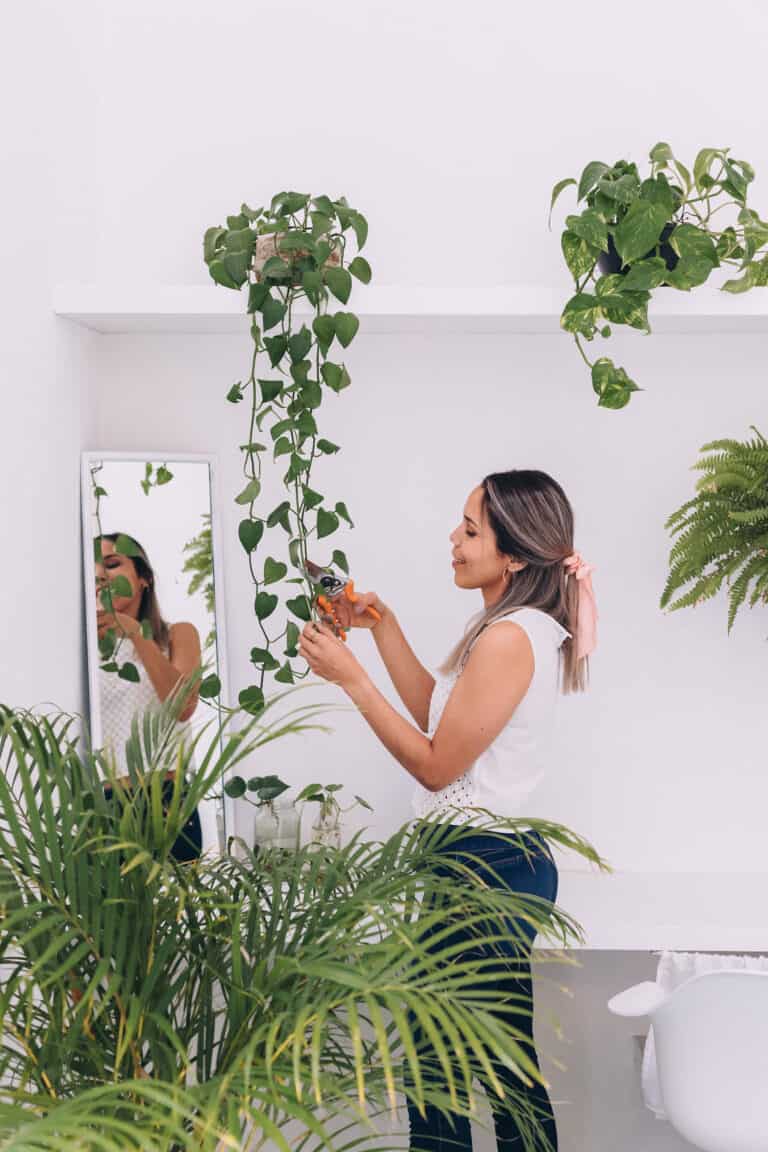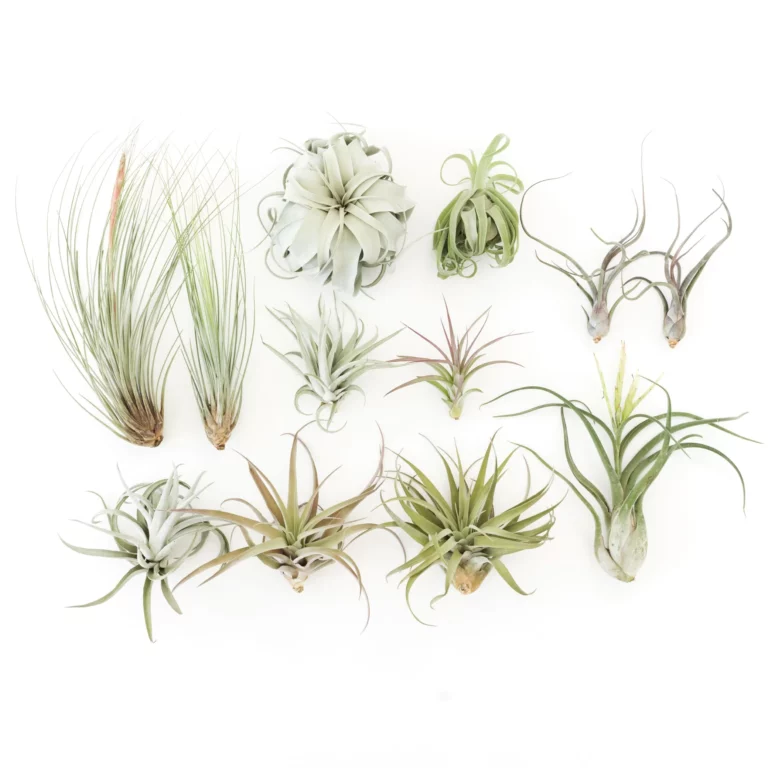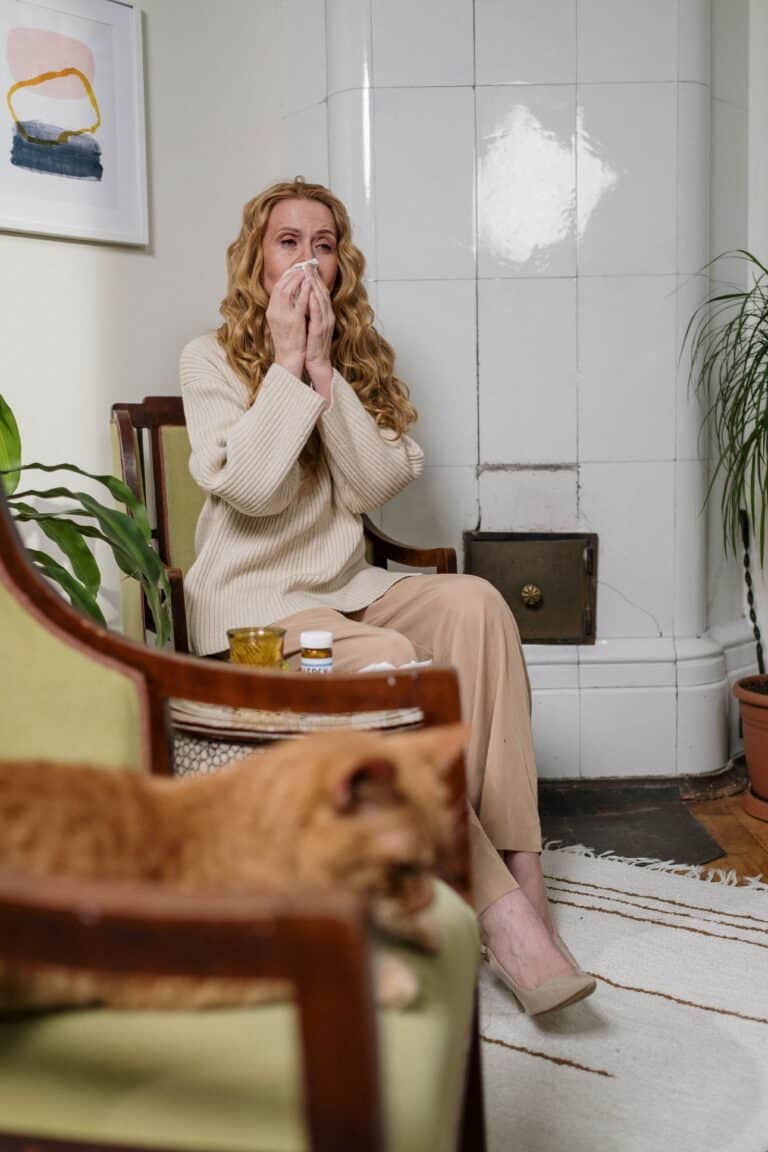Safe Houseplants for Your Pets
You know, when I first adopted Max, my lively, curious, and slightly mischievous golden retriever, I had no idea about the minefield I was stepping into.
Surprising, right?
There I was, with a living room full with an array of plants, blissfully unaware that some of them could pose a real danger to my new furry buddy.
Only when I caught Max sniffing suspiciously around my favorite monstera did I realize… I needed to up my plant game!
And by upping, I mean looking into the wide world of pet-friendly plants.
Because, as any pet owner worth their salt will tell you, keeping our fluffy friends safe is priority numero uno.
So,In this guide, ill show you houseplants that add beauty without sacrificing the safety of our cherished pets.
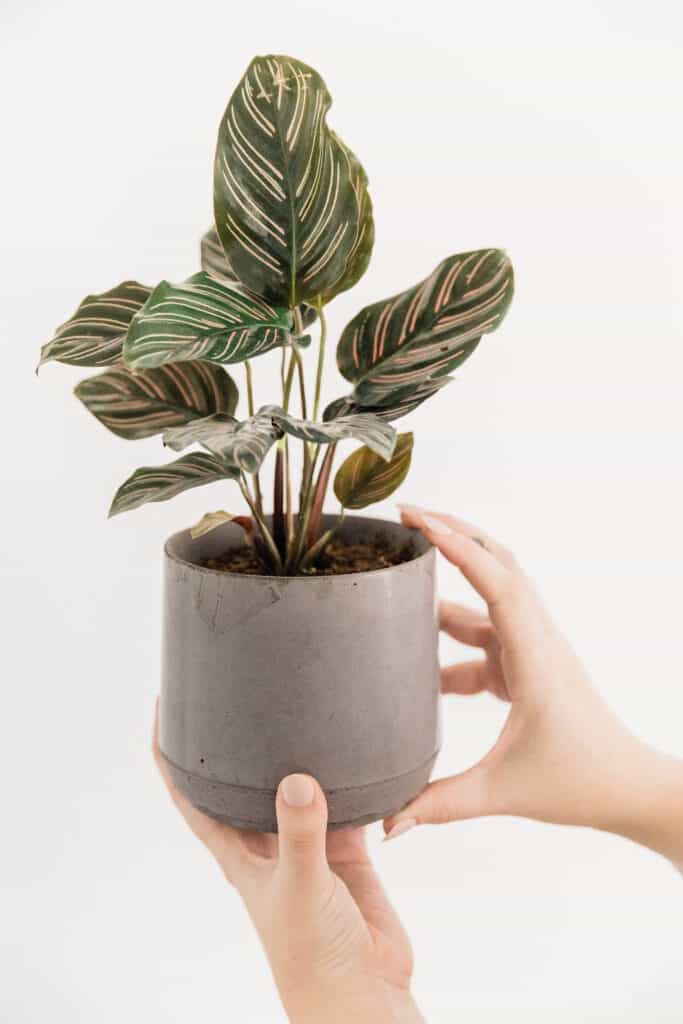
Understanding Plant Toxicity for Pets
The same thing happened with my kitten, I spotted him curiously batting at my luscious snake plant.
I swiftly moved him away, then I thought, what if he had actually chewed on one of the leaves?
Reactions could range from minor irritations right up to life-threatening situations, depending on the kind of plant and how much has been gobbled up.
Common Symptoms of Plant Poisoning
So how do you know if your cuddly companion has tangled with a toxic plant? Here’s what I keep an eye out for:
- Vomiting: This is a typical sign of plant poisoning in pets.
- Diarrhea: Same goes for an upset tummy. It could be their little bodies trying to purge a toxic intruder.
- Nausea: Pets can’t exactly tell us they’re feeling queasy, can they? But I’ve found certain signs like restlessness, drooling a bit too much, or trying to vomit as potential red flags.
- Drooling: Speaking of drooling, if it’s excessive, it could mean their mouth and throat are irritated from contact with a toxic plant.
- Depression: A noticeable drop in energy or a sudden lack of interest in their favorite squeaky toy could indicate something’s off.
- Weakness: After a tussle with a toxic plant, they might seem unsteady on their feet, or might not be jumping around with their usual spryness.
- Skin irritation: Certain plants can cause dogs or cats to itch and scratch, especially around their mouth and face.
Worse still, some seriously harmful plants can trigger liver failure in pets.
It’s scary, I know.
Symptoms might include a yellow tinge to the eyes, gums, or skin, significant weight loss, loss of appetite, or constant fatigue.
To avoid such horrors, I equipped myself with knowledge about potentially dangerous plants and made it my mission to cultivate a pet-friendly indoor garden.
If I ever suspect that my pets have had a run-in with a toxic plant, I rush them to the vet immediately.
There’s nothing like professional advice to soothe a pet parent’s worries.
Non-Toxic Houseplants for Your Home
Prioritizing the safety of my furry pals doesn’t mean compromising my love for greenery. I
‘ve put together a list of beautiful, non-toxic houseplants that you can invite into your home without any worries.
Here are some fabulous options:
- Spider Plants: A great choice for homes with pets. These plants purify the air and look stunning with their long, arching leaves.
- Ferns: Both Boston ferns and Bird’s Nest ferns are pet-safe. They add lush greenery and love indirect light and humid surroundings.
- Prayer Plants: These and their close cousin, the Calathea, are pet-friendly and fascinating to watch as their leaves move in response to light changes.
- Money Trees: Besides being symbols of good luck and prosperity, these plants are safe for pets and thrive with minimal care.
- Peperomia: These plants are pet-friendly, versatile, and come in a variety of shapes and colors.
- African Violet: These flowering houseplants add a pop of color and are safe for pets. They need a bit of care but thrive under the right conditions.
- Echeveria: This pet-safe succulent adds charm to your indoor garden and requires minimal care.
- Parlor Palm: These pet-friendly plants are slow-growing and lend an exotic touch to your home.
- Chinese Money Plant: Also known as Pilea peperomioides, these eye-catching, pet-safe plants are easy to care for.
- Air Plants: These unique, soil-less plants are safe for pets and can be displayed in many creative ways.
- Christmas Cactus: These pet-safe succulents bloom during the holiday season, adding a festive touch.
- Haworthia: Also known as zebra cactus, this small succulent is safe for pets and requires minimal care.
- Cat Grass: Perfect for satisfying your cat’s urge to chew on plants. It’s safe and provides essential nutrients for your feline friend.
Remember, even though these plants are pet-friendly, it’s always a good idea to keep them out of reach or supervise your pets around them.
Even non-toxic plants might cause an upset tummy if consumed in large quantities.
So go ahead, and create a beautiful and safe indoor garden for your pets.

Toxic Houseplants to Avoid
Do you know what they say about beauty being skin-deep?
That couldn’t be truer when we’re talking about certain houseplants.
Lilies
Take Lilies, for instance. With their stunning flowers, they make a delightful addition to any home.
But if you’re a cat parent, think twice before bringing these beauties indoors. Even a tiny nibble from a curious kitty can lead to kidney failure.
I’m sorry to say, but lilies and cats just don’t mix.
Aloe Vera
Aloe Vera, that soothing, sunburn-saving hero of our skincare routine, unfortunately, doesn’t make the cut for being pet-friendly either.
Yep, it’s a bummer, I know!
The same gel that works wonders on our skin can cause an upset stomach, vomiting, and diarrhea in both dogs and cats.
So, for your pet’s sake, let’s keep that Aloe Vera plant on a high shelf or a room that’s off-limits to your pets.
Pothos
Another popular houseplant, the Pothos (also known as Devil’s Ivy), contains calcium oxalates, which spell trouble for your furry pals.
Accidental ingestion can cause burning in and around the mouth, and even breathing difficulties.
Amaryllis
It’s a similar story with Amaryllis and its gorgeous trumpet-shaped flowers.
Toxic to both dogs and cats, ingestion can lead to vomiting, drooling, and belly pain.
You might want to admire these beauties from a safe distance.
Calathea Plants
Calathea Plants, with their vibrant leaves, are, unfortunately, a no-go too.
Ingestion may cause upset stomach and vomiting.
So, as much as we love their color play, it’s best to keep them away from our pets.
Rubber Plant
It’s easy to fall for the glossy leaves of a Rubber Plant. But beneath their shiny facade lies a substance that can be toxic to our four-legged friends, causing symptoms like vomiting, diarrhea, and drooling.
A sight we’d all rather avoid.
Sago Palm
Standing tall and handsome, the Sago Palm makes for quite an eye-catcher.
But don’t let its charm fool you.
This plant can cause severe liver failure in cats and dogs, even with small ingestion.
Tragic consequences make this beauty a beast.
Deceptive Peace: Peace Lily
The Peace Lily, with its white, serene flowers, may seem like the perfect calming addition to your home.
However, much like its earlier counterparts, it contains calcium oxalates.
If your pet takes a liking to it and decides to take a bite, they could experience mouth irritation, drooling, and even vomiting.
Chinese Evergreen
With their lush, green leaves, Chinese Evergreens can add a touch of nature to any corner.
But here’s the downside; these plants can cause oral irritation, excessive drooling, and vomiting in pets. Keep this green beauty away from your furry pets
Fiddle Leaf Fig
Fiddle Leaf Fig, a crowd favorite, is also on this list.
Yes, the news is disappointing.
This plant can cause oral irritation, drooling, and vomiting in cats and dogs.
This fig is a tricky one to have around your furry friends.
Pet-Safe Alternatives: Outdoor Plants
As a pet parent, don’t lose heart.
There are plenty of pet-friendly plants you can safely add to your garden.
And some of them even come with health benefits!
Holy Basil
Let’s start with Basil.
This herb is safe for your pet, and besides its culinary use, it offers various health benefits such as antioxidants and aid in digestion.
Plus, it’s a natural insect repellent.
Your pet can safely sniff and even nibble on this one.
Rosemary
Moving on to Rosemary.
This herb isn’t just a staple in your kitchen but also a pet-friendly plant. It’s known for its health benefits like boosting circulation and reducing inflammation.
Plus, it’s safe for your fur babies to be around.
Orchids
Want to add some color to your garden?
Orchids are a perfect and safe choice.
Varieties like Phalaenopsis orchids are non-toxic and pet-friendly.
like the perfect summer blockbuster – everyone, including your pets, can enjoy.
Succulents
Finally, if you’re a fan of low-maintenance greenery, some Succulents are safe for your pets. Plants like Haworthia and Echeveria add an interesting touch to your garden, and they’re perfectly safe for your pets.
But remember, not all succulents make the cut (looking at you, Aloe Vera!).
Always research before adding a new plant to your garden.
Caring for Your Pet-Friendly Plants
As pet parents, our home is their playground, their space.
And if we are adding green to this space, we have to make sure it’s safe and that it thrives along with our pets.
Let’s dive into some aspects of maintaining a happy, healthy environment for all your family members, furry and leafy.
Humidity
An essential aspect to consider is Humidity.
Many pet-friendly plants, such as the charming Fittonia, love a moist environment.
This humidity can also pamper our fur babies, especially those with skin issues.
How to achieve the right humidity level, you ask?
A humidifier is one way.
Or, for a simple fix, try placing a tray of water near your plant it will help add moisture to the air.
Plant Care 101
Here are some easy yet effective Plant Care Tips to keep your green friends healthy
Watering: Just like we need hydration, so do our plants. Pet-safe varieties like African Violets and Christmas Cacti prefer their soil to be evenly moist. But remember, there’s a thin line between sufficient water and waterlogged soil that can lead to root rot.
Lighting: Just like your pet basking in the sunlight streaming through the window, your plants also need their share of light. Most pet-friendly plants adore bright, indirect light. But don’t forget, each plant has its own ‘light’ preferences.
Fertilizing: Plants, like any living thing, need food. And that’s where a good fertilizer comes in. But moderation is the key. Follow the instructions on the pack to avoid over-fertilization.
Preventing the Nibble
Even with pet-safe plants, it’s crucial to monitor your pet’s fascination with green. So how do we prevent these adorable Consumption Issues?
- Keep your plants at places that your pets can’t access easily, like on a shelf or in a hanging basket.
- Teach your pets to keep their paws (and mouths) off the plants. A firm “no” or a pet deterrent spray could work.
- Introduce pet-friendly grass or specific plants that are safe to chew on to divert their attention from your other houseplants.
Follow these, and you will have a haven for your pets and plants.
There You Go
I hope I’ve planted some wisdom on co-existing in a leafy, pet-loving home!
Now, it’s over to you.
Got a funny story about your pets’ shenanigans with your houseplants?
Or maybe you’ve found an awesome plant that your pets totally adore?
Well, don’t leave me hanging drop it all in the comments below!
Oh, and don’t you dare miss out on this: our free pet-friendly plant guide.
Until we meet again, keep those paws safe and your plants lush!


